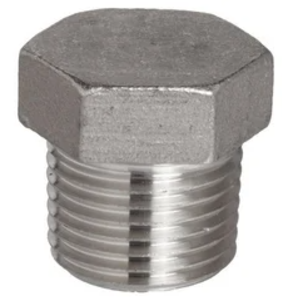Head plugs are essential components in various industries, serving crucial functions in system maintenance and protection. This comprehensive guide delves into the world of head plugs, exploring their purpose, types, key features, installation practices, and the role they play in system integrity.
Understanding the Purpose of a Head Plug
A head plug, also known as a pipe plug or blind plug, is a device designed to seal off the open end of a pipe or fitting. This simple yet vital component prevents leaks, contamination, and damage to the system. Head plugs are commonly used in applications such as:
➡️ Plumbing: Sealing off unused pipes or fittings during construction or repairs.
➡️ Industrial piping: Isolating sections of a pipeline for maintenance or inspection.
➡️ Hydraulic systems: Protecting components from debris and preventing fluid loss.
➡️ Pneumatic systems: Ensuring system integrity and preventing air leaks.
Types of Head Plugs and Their Uses
Head plugs come in various types, each suited for specific applications. The most common types include:
➡️ Threaded head plugs: These plugs feature male threads that screw into a female threaded fitting, providing a secure and reliable seal.
➡️ Non-threaded head plugs: Also known as compression or slip-on plugs, these plugs rely on a compression fitting or gasket to create a seal.
➡️ Specialty head plugs: These plugs are designed for specific applications, such as high-pressure or high-temperature environments.
Key Features to Look for in a Head Plug
When selecting a head plug, consider the following key features:
➡️ Durability and pressure resistance: Ensure the plug can withstand the operating pressure and temperature of your system.
➡️ Compatibility with different systems: Choose a plug that is compatible with the materials and fittings in your system.
➡️ Corrosion resistance: Opt for a plug made from corrosion-resistant materials to prolong its lifespan.
Installation Best Practices for Head Plugs
Proper installation of a head plug is crucial to ensure a reliable seal. Follow these best practices:
➡️ Clean the threads: Remove any debris or contaminants from the threads of the fitting and the plug to ensure a clean and tight fit.
➡️ Apply thread sealant: Use a suitable thread sealant to prevent leaks and corrosion.
➡️ Hand-tighten the plug: Tighten the plug by hand until it is snug, then use a wrench to tighten it further.
➡️ Avoid overtightening: Overtightening can damage the threads or the plug itself.
Choosing the Right Head Plug for Your Needs
Selecting the right head plug involves considering several factors:
➡️ System requirements: Assess the pressure, temperature, and fluid compatibility requirements of your system.
➡️ Material compatibility: Choose a plug made from a material that is compatible with the fluids in your system.
➡️ Size and thread type: Ensure the plug has the correct size and thread type to fit your fittings.
➡️ Cost and quality: Balance the cost of the plug with its quality and durability.
Conclusion: Maximizing the Value of Head Plugs
Head plugs are essential components that contribute to the overall reliability and efficiency of various systems. By understanding their purpose, types, and key features, you can select the right head plug for your needs and ensure optimal system performance.
Stay informed about the latest innovations in head plug technology to maximize the value of these crucial components.
Post time: Nov-28-2024


